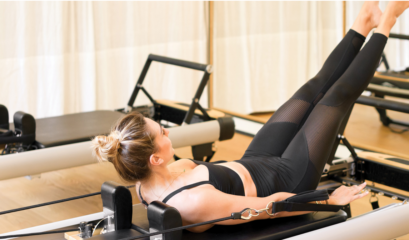Our physios at Rose Bay Physiotherapy and Sports Injury Centre reveals what symptoms you should look out for when assessing the severity of a knee injury
Much like ankle injuries, knee injuries are unfortunately prevalent in netball due to the range of motion and speed at which the body changes direction and position for the duration of the game. Ranging from minor discomfort to season-ending setbacks, these injuries often include Anterior Cruciate Ligament (ACL) tears, accounting for up to 25% of serious netball injuries. Frequently, these injuries are accompanied by meniscal tears and other ligament damage.
So, how can we discern between severe knee injuries requiring immediate attention and more minor ones?
You’ll need immediate attention if:
- The injury prevents you from continuing to play
- You hear a clicking or popping sound
- Swelling occurs, either immediately or within a few days
- You experience a sensation of instability or your knee gives way, especially during sudden movements or changes in direction
- You can’t move your knee through its full range of motion
If any of these signs are present, it’s crucial to contact your physiotherapist or medical practitioner as soon as you can.
Meniscus injuries are relatively common in netball players, impacting the structure that provides stability and cushioning to the knee joint.
- Why do these injuries occur?
Meniscus injuries are prevalent in netball due to the sport’s dynamic movements, sudden stops, pivots, and jumps. The frequency of these activities increases the risk of meniscal tears: when the knee undergoes forceful twisting or rotational movements. - Symptoms and Diagnosis
Netball players with a meniscus injury may experience pain, swelling, stiffness, and a popping sensation in the knee. Diagnosing a meniscus injury typically involves a physical examination, imaging tests (like an MRI), an assessment of the individual’s medical history and the mechanism of the injury. - Treatment Options
The management of meniscus injuries in netball players varies depending on the severity and location of the tear. Conservative treatments may include rest, ice, compression, and elevation (RICE), along with physiotherapy to improve strength and flexibility. In some cases, particularly for more significant tears or cases where conservative measures are not effective, surgical intervention such as arthroscopy may be recommended to repair or remove the damaged portion of the meniscus.
Netball players need to be aware of the potential for meniscus injuries, and if symptoms arise, seeking prompt medical attention is crucial to ensure a proper diagnosis and an effective treatment plan. Additionally, preventive measures such as proper warm-up, conditioning, and techniques to minimise excessive rotational stress on the knee can contribute to
reducing the risk of meniscus injuries.
Many knee pains in netball stem from overuse or poor knee mechanics, issues that are treated easily. If you endure persistent or worsening discomfort lasting more than a few weeks, early treatment can prevent further damage.
Common, casual knee pains in netball, including patellofemoral pain (poor kneecap movement) and jumper’s knee (patellar tendon overuse), are often encountered. These manifest as pain in the front of the knee during activities such as jumping, running, squatting, lunging, or climbing stairs.
Treatment for these injuries often involves:
- Stretching of muscles (especially quadriceps and iliotibial band)
- Knee taping for support
- Reviewing footwear and considering arch support
- Strengthening and stability exercises
With knee injuries affecting a significant portion of netball players, prevention and early intervention are crucial. Feel free to reach out to the Benchmark Rose Bay physio on duty at the netball courts with any questions or concerns.
Stay safe, prioritise adequate warm-up and stretching, and keep playing!









